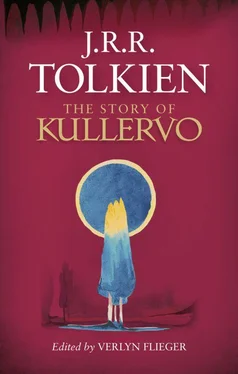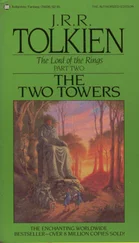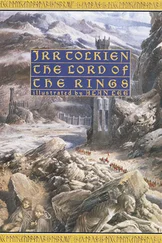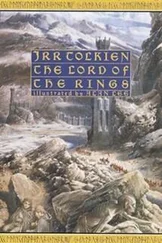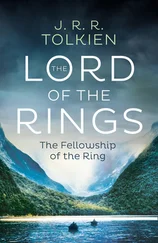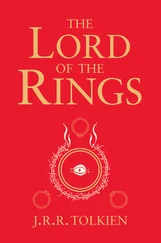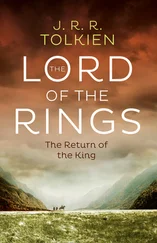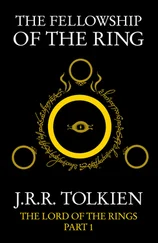the Mabinogion. The great literary repository of Welsh mythology. It exists for the most part in two manuscripts, the White Book of Rhydderch ( Llyfr Gwyn Rhydderch , AD 1300–1325) and the Red Book of Hergest ( Llyfr Coch Hergest , 1375–1425). It was translated into English by Lady Charlotte Guest in 1838–49. Tolkien had copies of all three volumes in his library.
74 Väinämöinen. The primeval singer and oldest culture-hero, first of the ‘big three’ heroes of Kalevala , the other two being Ilmarinen the smith and Lemminkainen the rascally playboy. Väinämöinen is the first-born and most folkloric of the three, having aspects of shamanism in his character.
Petrograd is in Finland. Tolkien is speaking geographically, not politically, though in the case of Finland the two often overlap, since Finland became a Grand Duchy of Russia in 1809. Petrograd (changed from St. Petersburg in 1914) is at the head of the Gulf of Finland, at the base of the Karelian isthmus. Karelia, which has a large Finnish population, is divided now between Finland and Russia. Many of the runos collected by Lönnrot, especially those concerning Kullervo, came from Karelia.
75 Elias Lönnrot in 1835 made a selection. In 1835 Elias Lönnrot, a Finnish physician and folklore collector, published a selection from his extensive collection of runos or songs, now called the Old Kalevala .
Lönnrot was not the only collector. Earlier collectors included Zachris Topelius, Matthias Castrén, Julius Krohn, and Krohn’s son Kaarle Krohn. For a complete discussion see Domenico Comparetti, Traditional Poetry of the Finns , London: Longmans Green, 1898, and Juha Pentikäinen, Kalevala Mythology , trans. Ritva Poom, Indiana University Press, 1989.
published again in 1849. The augmented, standard edition of Kalevala from which all current translations are made.
78 ‘Hiawatha’ is not a genuine storehouse of Indian folklore, but a mild and gentle bowdlerising of the Kalevala. For more on this, and for its relation to Tolkien’s invented languages, see John Garth’s essay on Tolkien and Longfellow, ‘The road from adaptation to invention’ in Tolkien Studies Vol. XI, pp. 1–44.
L[ongfellow]’s names are often too good to be inventions. See Garth’s essay (cited above) for an extended discussion of the relationship among the names in Kalevala , ‘Hiawatha’, and Tolkien’s Qenya/Quenya.
the Kal[evala]’s first rush into translations in Scandinavian and German. There was indeed a ‘rush into translations’ starting with a translation into Swedish of the Old (1835) Kalevala by Matthias Castrén (a Finn) in 1841. In 1845 Jakob Grimm included thirty-eight lines from Runo 19 in a presentation to the German Academy of Sciences, and a complete translation into German of the New (1849) Kalevala was produced by Anton Schiefner in 1852.
‘Chanting the Hundredth Psalm that Grand old Puritan Anthem’. Tolkien’s syntax makes it hard to figure out exactly who said what to whom about what, but apparently it is an ‘American appreciation’ quoted in the London Daily News as praising Longfellow’s ‘The Courtship of Miles Standish’ for containing ‘one of the most marvellous lines in all English.’ The line in question (misquoted in Tolkien’s text) describes Priscilla Mullens, the object of the Courtship, ‘singing the hundredth Psalm, the grand old Puritan anthem’. Equally unclear is the object of Tolkien’s obvious sarcasm, whether it is the American appreciator of the quote, the London Daily News for its taste in poetry, or Longfellow for calling a Hebrew Psalm a ‘Puritan anthem’. Or all of these.
79 Ilmarinen. One of the ‘big three’ heroes of Kalevala. His name is formed from ilma , ‘sky’, with the occupational suffix ri . He has the epithets seppo , ‘craftsman’, and takoja , ‘hammerer, forger’. He was originally the maker of the sky, Finnish kirjokansi the ‘decorated/many-coloured lid’, and is the forger of the Sampo, the mysterious creation which is the object of contention in Kalevala .
Kaukomieli. A by-name or epithet for Lemminkainen, the reckless playboy, third of the ‘Big Three’. Magoun translates Kaukomieli as ‘man with a far-roving mind’; Friburg as ‘far-minded’, Kuusi, Bosley and Branch as ‘far-sighted’ or ‘proud’.
80 ‘speeches in part’. A convention of folk tale and folk poetry in which inanimate but personified objects have voices and speak for themselves, usually to or about human characters. The harp in ‘Jack and the Beanstalk’ telling the giant that Jack is stealing it is an example. Tolkien used the convention in The Hobbit when he had the Trolls’ purse speak to Bilbo, who was trying to steal it.
82 Ahti and his wife Vellamo dwell in the waters. Ahti appears most often as a by-name for Lemminkainen, while Kirby gives Ahto as the name of the God of the Sea and of the Waters, husband of Vellamo, according to Kirby ‘the goddess of the Sea and of the Waters, the spouse of Ahto.’ Ahti as a variant of Ahto does, however, occasionally appear as the name of a water-god.
[Typescript draft]
I am afraid this paper was not originally written for this society, which I hope it will pardon since I produce it mainly to form a stop-gap to night, and to entertain you as far as possible in spite of the sudden collapse of the proper speaker. I hope you will also forgive, besides its second-hand character its quality — which is hardly that of a paper, rather a disconnected soliloquy accompanied by a leisurely patting on the back of a pet volume. If I continually drop into talking of these poems as if no one in the room had ever heard of them but myself, you must attribute it to the strange chance that no one had when I read the paper before; and you must also attribute it to the ‘pet’-attitude. I am very fond of these poems — they are literature so very unlikeany of the things that are familiar to general readers, or even to those who stray in the more curious by-paths — they are so very un-European, and yet could only come from Europe.
Anyone who has read the collection of ballads which go by this name (more especially if he has read them, or even part of them, in the original — a vastly different thing to any translation) will I think agree to that. Most people are familiar from the days of their earliest books onwards with the general mould and type of mythological stories; legends, tales, romances, and so on, that come to us by many and crooked channels from ancient Hellas and the southern lands, from the North and the grim Germanic peoples, from the islands of the West and their old Keltic lords (whatever Keltic may mean). For some of us, for more than are often willing or honest enough to confess it, these achieved their crowning glory and delight in Stead’s pink-covered Books for the Bairns — that mine of ancient and undying lore. They have a certain style, or savour; a something akin to one another in them, in spite of their vast cleavages; a something that is more than the universal community of human imagination, and that makes you feel that, whatever the ultimate differences of race of those speakers, there is something kindred in the imagination of the speakers of Indo-european languages. Some far off things there were, of course, even in those little pink books; echoes from the black heart of Africa; trickles from a distant and alien East. Nothing in this world can be finally defined, or marked out with rigid lines. So it is with Europe. It has south-eastern frontiers over which have perpetually poured the influences, half-asiatic, half close kindred to ourselves, of the Semitic languages and cultures to be assimilated swiftly and often beyond easy recognition in Europe. But that is an old tale; and even perhaps while we are still arguing whether the Far East has given us more than a plot here, the shadow of an old tale there to be turned to our own uses, you come one very fine day upon the Kalevala, the Land of Heroes. Then you are indeed in a quite new world and can revel in an amazing new excitement.
Читать дальше
